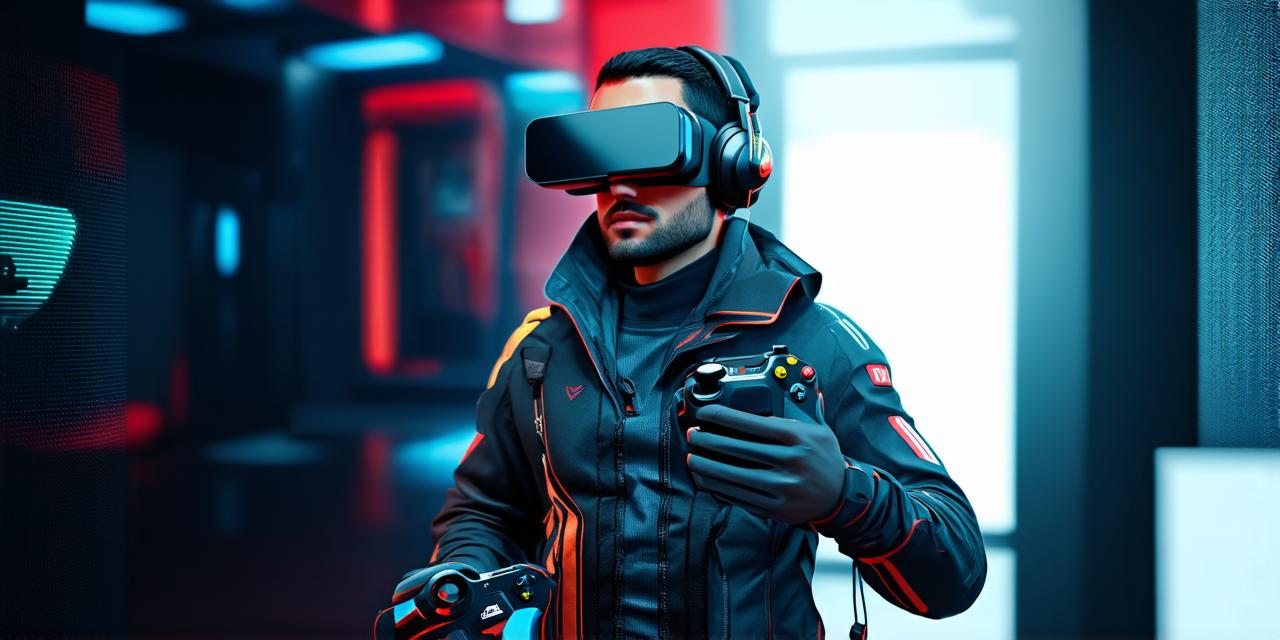Virtual reality (VR) is a rapidly growing technology that has numerous applications in various fields, from entertainment to healthcare.
Advantages of Virtual Reality Technologies
1. Immersive Experience
One of the main advantages of VR is that it provides a highly immersive experience, allowing users to feel as though they are in a different environment. This can be particularly useful in fields such as entertainment and gaming, where users can immerse themselves in a virtual world and interact with characters and objects in new and exciting ways.
2. Training and Simulation
VR technologies can also be used for training and simulation purposes. For example, medical students can use VR simulations to practice surgical procedures or military personnel can use VR simulations to train for combat situations. By providing a realistic environment for training, VR can help improve the effectiveness of these programs and reduce the risk of injury or fatalities in real-life scenarios.
3. Enhanced Learning
Virtual reality technologies can also be used to enhance learning experiences. For example, students can use VR simulations to explore historical events or scientific concepts in a more interactive and engaging way. This can help improve retention and understanding of the material, making it easier for students to apply what they have learned in real-life situations.
4. Improved Accessibility
VR technologies can also be used to improve accessibility for individuals with disabilities or those who are unable to travel to certain locations. For example, individuals with mobility impairments can use VR simulations to explore museums and cultural sites from the comfort of their own homes, while individuals with visual impairments can use VR headsets to experience the world in a more immersive way.
Applications of Virtual Reality Technologies
1. Entertainment and Gaming
As mentioned earlier, virtual reality technologies have numerous applications in entertainment and gaming. From immersive video games to interactive movies and virtual amusement parks, VR can provide users with a unique and exciting way to experience entertainment content.
2. Healthcare and Medical Training
Virtual reality technologies are also being used in healthcare and medical training. For example, doctors can use VR simulations to practice surgical procedures or medical students can use VR simulations to learn about anatomy and physiology. By providing a realistic environment for learning and practice, VR can help improve the effectiveness of these programs and reduce the risk of injury or fatalities in real-life scenarios.
3. Real Estate and Architecture
Virtual reality technologies are also being used in real estate and architecture. For example, architects can use VR simulations to explore and design new buildings and structures in a more interactive and engaging way. This can help improve the efficiency of the design process and allow clients to better visualize the final product.
4. Education and Training
As mentioned earlier, virtual reality technologies can also be used for education and training purposes. From history simulations to language learning programs, VR can provide students with a more interactive and engaging way to learn and retain information.
Real-Life Examples of Virtual Reality Technologies
1. Oculus Rift
The Oculus Rift is one of the most popular virtual reality headsets on the market. It was developed by Oculus VR, a company acquired by Facebook in 2014. The Oculus Rift provides users with a highly immersive experience and can be used for entertainment, gaming, and training purposes.
2. Google Expeditions
Google Expeditions is a virtual reality app developed by Google that allows users to explore different locations and historical events in a more interactive and engaging way. Users can use their smartphones or tablets to experience virtual tours of museums, cultural sites, and other locations around the world.
3. Microsoft HoloLens
The Microsoft HoloLens is another popular virtual reality headset that was developed by Microsoft. It provides users with a highly immersive experience and can be used for entertainment, gaming, and training purposes. The HoloLens also includes features such as hand tracking and voice commands, making it easier for users to interact with virtual content.
Conclusion
Virtual reality technologies are rapidly evolving and have numerous applications in various fields. From entertainment and gaming to healthcare and medical training, VR can provide users with a highly immersive experience and improve learning outcomes.
